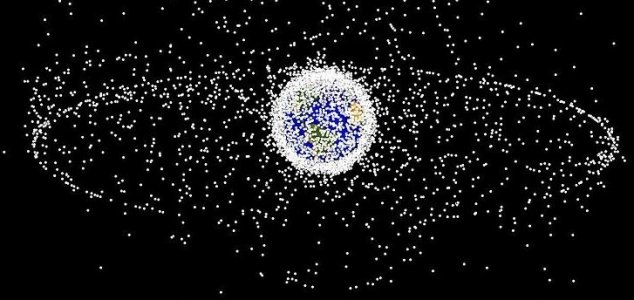Space & Astronomy
February 6, 2017 · 8 comments
8 comments

Our planet is surrounded by large amounts of space junk. Image Credit: NASA
Now in a renewed bid to solve the problem, scientists in Japan have been working on deploying an electrodynamic tether in space. Measuring 700 meters long and made from thin wires of stainless steel and aluminium, the tether was due to be deployed from a cargo ship traveling to the ISS.
If successful, it would have helped to reduce the amount of debris by slowing down some of the pieces and bringing them in to a lower orbit where they would have eventually burned up in the planet's atmosphere.
Sadly though, despite a concerted effort by technicians, the device failed the deploy correctly.
"We believe the tether did not get released," said lead researcher Koichi Inoue. "It is certainly disappointing that we ended the mission without completing one of the main objectives."
Source: The Guardian | Comments (8)
Japan's space junk tether fails to deploy
By T.K. RandallFebruary 6, 2017 ·
 8 comments
8 comments
Our planet is surrounded by large amounts of space junk. Image Credit: NASA
The experimental tether had been designed to help solve the problem of space junk in Earth's orbit.
Satellites and spacecraft are already running a daily gauntlet of spent rocket stages, screws, bolts and other objects that currently encircle our world. As time goes on the problem will reach the point at which it will be too risky to send anything else up in to space due to the risk of a collision.Now in a renewed bid to solve the problem, scientists in Japan have been working on deploying an electrodynamic tether in space. Measuring 700 meters long and made from thin wires of stainless steel and aluminium, the tether was due to be deployed from a cargo ship traveling to the ISS.
Sadly though, despite a concerted effort by technicians, the device failed the deploy correctly.
"We believe the tether did not get released," said lead researcher Koichi Inoue. "It is certainly disappointing that we ended the mission without completing one of the main objectives."
Source: The Guardian | Comments (8)

The Unexplained Mysteries
Book of Weird News
AVAILABLE NOW
Take a walk on the weird side with this compilation of some of the weirdest stories ever to grace the pages of a newspaper.
Click here to learn more

Support us on Patreon
BONUS CONTENTFor less than the cost of a cup of coffee, you can gain access to a wide range of exclusive perks including our popular 'Lost Ghost Stories' series.
Click here to learn more
Natural World
United States and the Americas
Earth, Natural Disasters and the Environment
Ancient Mysteries and Alternative History
Total Posts: 7,779,680 Topics: 325,650 Members: 203,949
Not a member yet ? Click here to join - registration is free and only takes a moment!
Not a member yet ? Click here to join - registration is free and only takes a moment!



































Please Login or Register to post a comment.